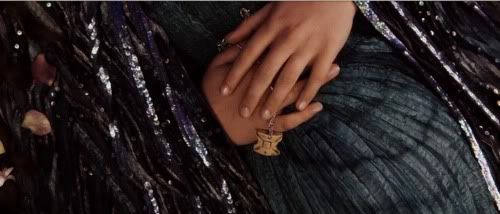Hello hello!
Today I have a phenomenal guest post by Katie de Long, following up on the concept mentioned in my last post. Because we're in the middle of a move and Important Life Stuff, the series I have planned will go into December. Don't worry--the ideas I have planned for you won't go wasted! But without further ado--please give Katie de Long a warm welcome.
***
Horror's provided one of the most accessible outlets for people to explore their fears, from the Grand Guignol performances, to Dracula's penchant for distancing reproduction from sex, something that would have upset the societal order of the time, as well as confronting madonna/whore ideas about women's sexuality. But as time's gone on, and our societal discussions have changed, the exact nature of the fear has shifted, to one that allows us to confront much more direct societal issues, like sexual assault.
Think of the brooding vampire. He didn't know what he was getting into, when he followed that beautiful, dangerous-looking woman home. He looks on it after with traumatized eyes, remembering struggling as she forced her blood down his throat. Or not realizing what was happening until it was too late, and he was too weak to fight. When the curse takes hold, and he finds himself turning violent, unstable, it hammers the cycle of abuse home, how sometimes it's most natural to hurt those we love, or to betray our own ethics, because of how we've been hurt. Think of the aversions that often come with this: a fear of being touched, an obsessive awareness of others' proximity, moods, habits, a conviction you'll never be loved, never be redeemed, an implication that it's somehow your fault that you were turned.
This angle's often discussed less, in favor of the inherent sexuality in vampirism- the eroticism of the physical contact, of sharing intimate fluids with someone, the heat of the danger in feeding/being fed upon. But it's there, in basically every tortured vampire with a soul. Even Buffy has multiple examples of this mindset.
But the way it's written is often a far more deft way of handling psychological narratives better suited to an assault victim than the treatment of sexual assault victims. In this way, it's able to subvert narratives about power and domination, showing the complex downsides of that kind of drastic physical/mental change. It's people talking about rape without framing it as rape, and those characters being better understood, and portrayed in more nuanced ways than rape victims.
Vampires aren't the only way this manifests. The Mary Sue posted an interesting piece recently examining this aspect of iZombie, how the character's situation could easily be read as pre/post assault. (http://www.themarysue.com/izombie-allegory-sexual-assault/) It's a fairly common theme, because on some level we understand this thought process, even without having gone through it personally.
Just as the vampire's relationship with his vampirism evolves, between self-hatred and self-acceptance, moderating the harms of what's been done, and struggling to become someone he can live with despite it, so does our relationship with our own violent sides evolve.
Some have speculated that, rather than identifying with the heroine in a romance novel, female readers identify with the hero. The angry one, or aloof one, or brooding one. A prickly guy sells like hotcakes, while a prickly heroine gets panned in reviews. And while some of this has to do with the way we gender emotions- hell, even Inside Out allowed circumstantial anxiety and anger to be framed as male, while women were social awareness(Disgust), and the polar Joy and Sadness.- the rest has to do with the fact that we're not so much learning to love the hero for who he is, in the story's journey... we're learning to love ourselves. Even the angry, controlling, or violent bits.
In this way, our ongoing love affair with the brooding, straining-to-control-himself alpha Vampire is us setting up a framework to interpret our own experiences with sexual violence, or systemic issues like patriarchy or racism.
And this even includes the converse, the revenge narrative, like I Spit On Your Grave, or as books go, the Gypsy Brothers, that allow for a survivor to enact violence upon those who hurt them. In dark romance, especially, you see this theme emerge in the female narrators who are femme fatales: assassins, spies, people who are thrown into a position of being submissive to someone they hate and see as evil, but who have to ultimately come to accept both that person's darkness, and their own.
Horror and dark romance are all about exposing humanity's dark side for what it is... and then showing how to subvert or defeat it. How to control it. How to love it.
Katie around the internet:
Katie's site: http://delongkatie.com/
Katie's Facebook: https://www.facebook.com/katie.delong.12
Katie's Facebook Reader Group: https://www.facebook.com/groups/696177510494600/
Katie's Twitter: @delongkatie
Katie's Mailing List Signup: http://eepurl.com/CSk3n
Katie's ARC Reader Signup: http://eepurl.com/5Z9uj
***
Thanks for dropping by the nest once again. Leave your comments, rebuttals, and vehement agreements below. Don't miss any of the phuquerie--get on the mailing list. Find Michelle on Twitter, Facebook, and on Tumblr, and find her work on Amazon. Check back on the blog to see when one of the irregular posts has careened onto your feed. This is the one and only SciFiMagpie, over and out!








